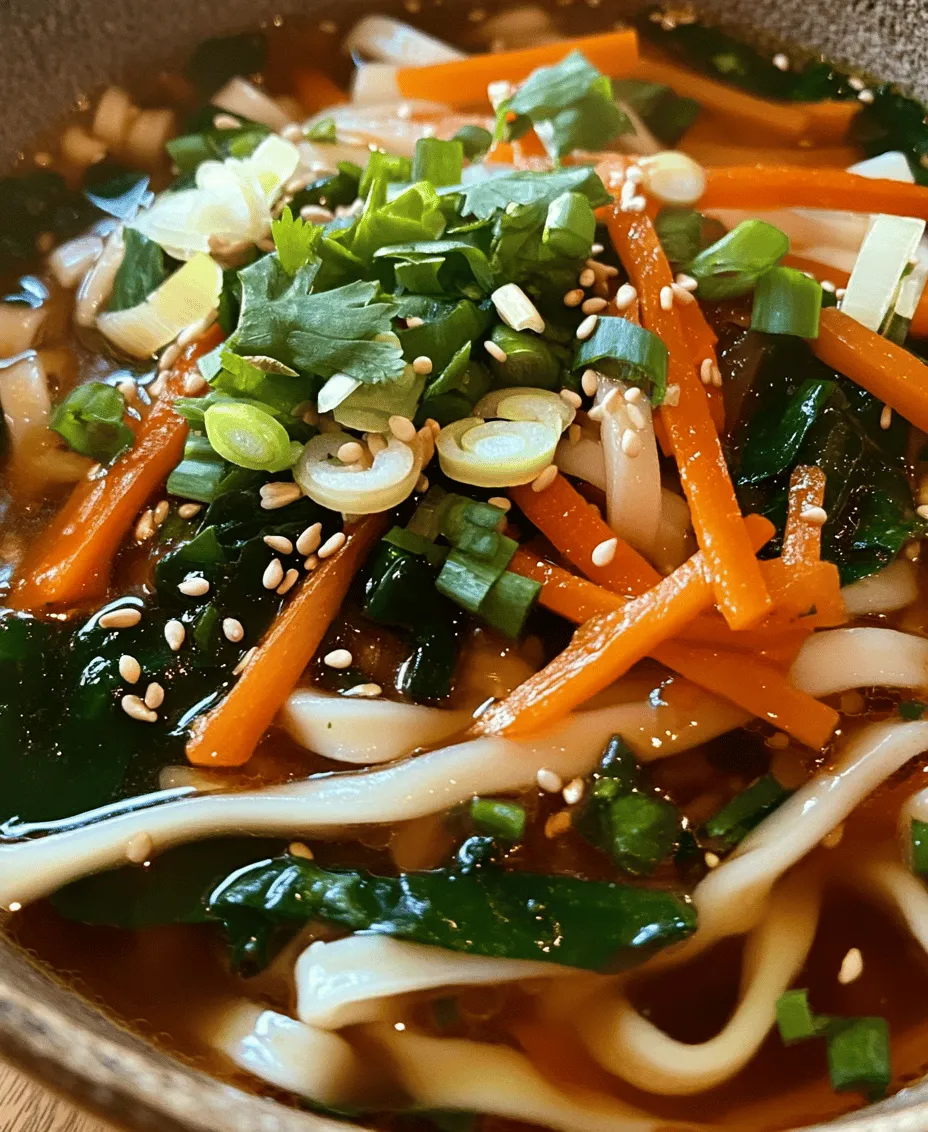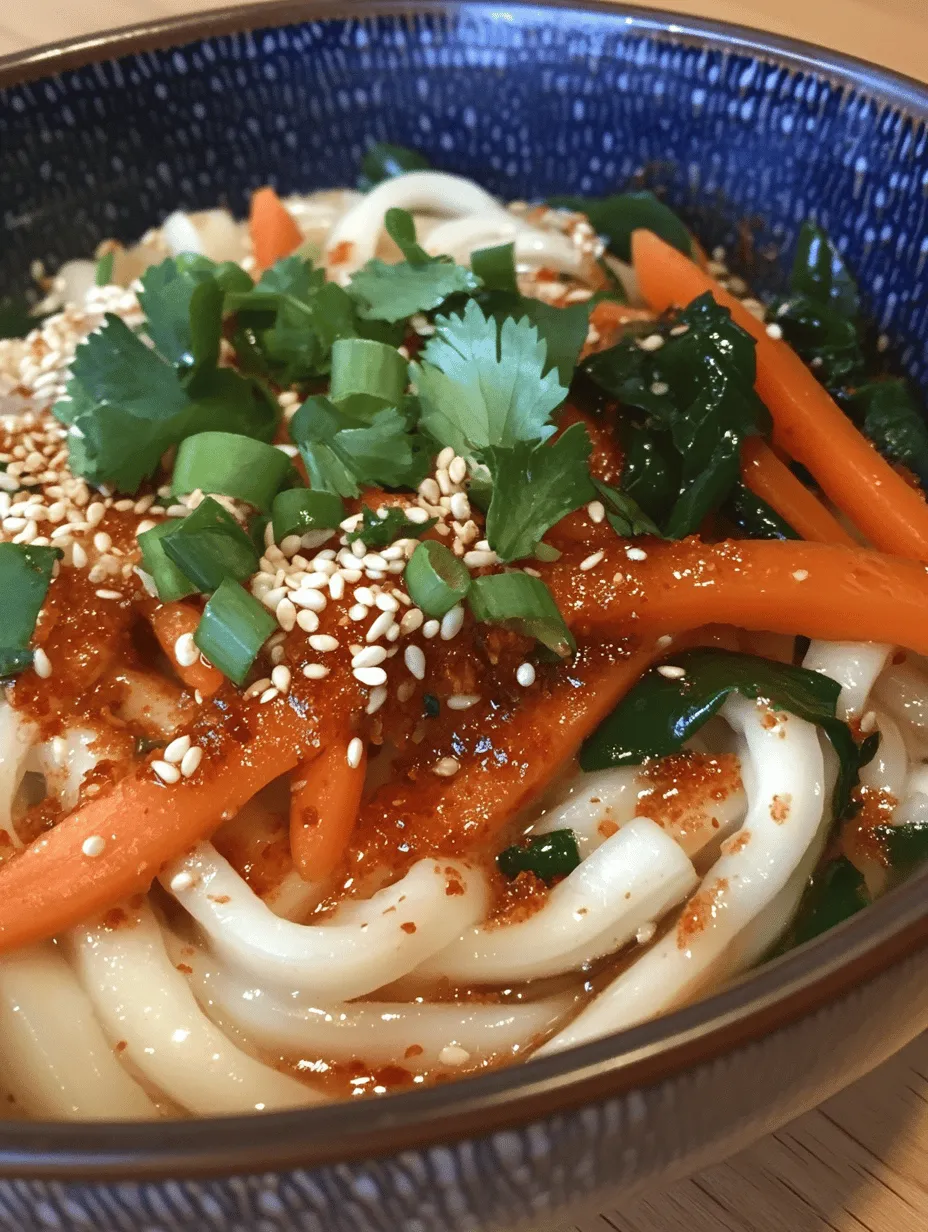Introduction
In today’s fast-paced world, finding a meal that is not only quick to prepare but also bursting with flavor can be a challenge. One dish that perfectly fits this description is Chili Oil Udon Noodles. This delicious recipe manages to deliver a satisfying balance of spice, umami, and freshness, all in under ten minutes. Whether you’re a busy professional, a student, or simply someone who enjoys cooking, this dish is ideal for those who crave a hearty meal without spending hours in the kitchen.
The appeal of Chili Oil Udon Noodles lies in their versatility. You can customize the dish to suit your taste preferences or dietary needs, adding in your favorite proteins or vegetables. This adaptability makes it a go-to recipe for anyone looking to whip up a quick yet fulfilling bowl of noodles.
The Allure of Udon Noodles
When it comes to Asian cuisine, udon noodles hold a special place. Originating from Japan, these thick, chewy noodles are made from wheat flour, water, and salt. Their unique texture is what sets them apart from other noodle varieties, providing a satisfying bite that many find irresistible. Udon noodles are typically served in a variety of broths or stir-fried dishes, making them a staple in many households.
Nutritionally, udon noodles are primarily composed of carbohydrates, making them an excellent source of energy. They are relatively low in fat and can be a part of a balanced diet. For those who are gluten-sensitive, it’s important to note that traditional udon noodles are made from wheat flour. However, there are gluten-free alternatives available on the market, allowing even those with dietary restrictions to enjoy this delightful dish.
Exploring Chili Oil
Chili oil is a flavorful condiment that adds a kick to any dish it graces. At its core, chili oil is infused oil that is typically made by steeping dried chili peppers in oil. It has roots in various cuisines, particularly in Chinese, Thai, and Korean cooking, where it is used to enhance the flavor of dishes. The oil not only imparts heat but also adds rich flavors that can elevate even the simplest of meals.
There are generally two types of chili oil available: store-bought and homemade. Store-bought versions often come with added ingredients, such as garlic or spices, which can enhance their flavor profiles. However, making your own chili oil at home allows for complete control over the ingredients and spice levels, ensuring that it aligns perfectly with your taste preferences.
In addition to its delicious flavor, chili oil also boasts numerous health benefits. It contains antioxidants, which can help combat oxidative stress in the body. Some studies suggest that the capsaicin found in chili peppers may even help boost metabolism, making chili oil a flavorful addition to your meals that can support your health goals.
Ingredient Breakdown
To prepare 10-Minute Chili Oil Udon Noodles, you’ll need a handful of simple yet impactful ingredients. Each one plays a crucial role in contributing to the overall flavor and nutrition of the dish.
1. Udon Noodles: As the star of this recipe, udon noodles provide the base for your meal. When selecting udon noodles, you’ll find that they come in various forms—fresh, frozen, or dried. Fresh udon noodles are ideal for this recipe as they cook quickly and have a delightful texture. If you opt for dried noodles, ensure you follow the package instructions for cooking time.
2. Chili Oil: Whether you choose to buy it from the store or make your own, chili oil is essential for flavoring your noodles. If you decide to make it at home, you can easily infuse your preferred oil with dried chili flakes, garlic, and spices to create a custom blend that suits your palate.
3. Garlic: This aromatic ingredient not only enhances the flavor of the dish but also provides health benefits. Garlic is known for its potential to boost the immune system and its anti-inflammatory properties. When sautéed, garlic releases a savory aroma that complements the chili oil perfectly, creating a depth of flavor that elevates the udon noodles.
4. Vegetables and Proteins (Optional): While the basic recipe is delightful as is, feel free to add in your favorite vegetables or proteins. Options like bok choy, bell peppers, or tofu can enhance the nutritional value of the dish and make it more filling.
With these ingredients in hand, you’re well on your way to creating a bowl of Chili Oil Udon Noodles that is not only quick to prepare but also packed with flavor and nutrition. In the next part of this article, we will delve into the detailed instructions for cooking this dish, ensuring that you can replicate this delightful meal in your own kitchen with ease.



